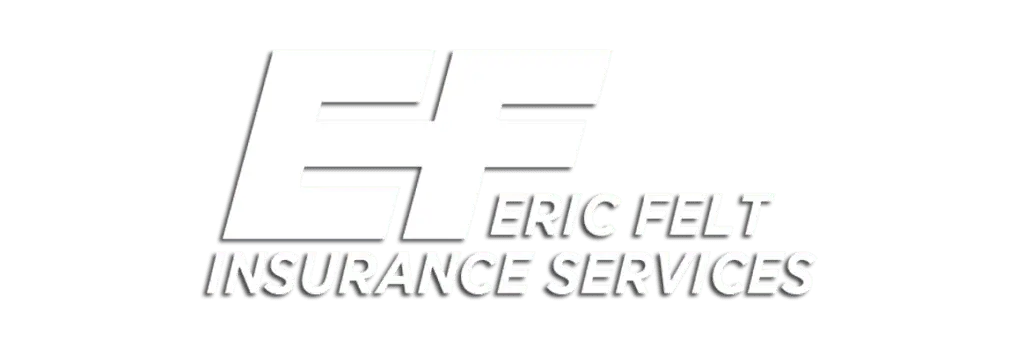Every year, insurance companies introduce new discounts that often fly under the radar. Too many people settle for their first quote and miss out on real savings. Overlooking these hidden perks means you could be paying hundreds more than you need to.
Digging a little deeper into your policy or simply asking your agent can bring out deals you never knew existed. Things like bundling policies, using safety features, or even paying your bill a certain way can add up to major savings. With a few smart moves, you can take control of your costs and stop leaving extra money on the table.
This post shines a light on the most missed discounts, breaks down why they matter, and gives you practical tips to start saving today.
Overlooked Discounts Based on Lifestyle and Personal Circumstances
Some of the most overlooked insurance discounts are tied not to your car or home but to your daily life. Your job, network, schooling, and even who you live with can drop your rates in ways you might not expect. Insurers pay close attention to these details because lifestyle choices often signal how likely you are to file a claim. If you skip these fields on an application or forget to ask, you could be passing up hundreds in easy savings.
Occupation-Specific Discounts
Insurance companies love data, and their numbers show that certain jobs—like teaching or healthcare—are linked with safer habits. So, if you’re an educator, first responder, healthcare worker, or serve in the military, don’t skip the occupation question. Many companies offer special reductions for:
- Teachers and Educators: Considered low-risk due to stable schedules and high responsibility. Some insurers even have dedicated educator programs, lowering premiums on car and home policies.
- Healthcare Workers: Doctors, nurses, and allied professionals often receive preset discounts. Many major brands openly promote these deals; you just need to ask.
- First Responders: Police, firefighters, EMTs, and paramedics are seen as responsible and attentive, which translates to extra savings.
- Military Members: Both active duty and veterans get recognition. Discounts for car, home, and even renters insurance are commonplace.
These savings exist thanks to partnerships between professional groups and insurers. They’re not always front-and-center, so be ready to show your employment status, union card, or badge.
Membership and Affiliation Discounts
Being part of an organization does more than fill your social calendar—you might unlock insurance savings just for paying your dues. Many companies have partnerships with alumni groups, professional associations, or even large employers. Common examples include:
- Alumni Associations: Graduates of colleges or universities may qualify, especially with larger schools.
- Professional Organizations: Groups like AAA, AARP, and various unions can unlock exclusive deals.
- Federal and State Employees: Special discounts often apply if you work for the government, especially in education, defense, or public service.
- Other Clubs: Even non-profits, fraternal organizations, or recreational groups sometimes have deals you won’t see in regular policy advertising.
Check if your organization is on your insurer’s approved list—some have pages just for group code entries. Sometimes all you need is a membership number.
Marriage and Education Savings
Your relationship status and level of education can also help lower your premiums. Here’s how:
- Marriage: Married couples often see between a 4% and 10% drop in auto insurance rates. Statistically, married people file fewer claims, leading companies to reward these lower risks automatically.
- Higher Education: Completing college usually reflects better responsibility and financial habits. Insurers often lower rates for policyholders with a bachelor’s or advanced degree.
- Good Student Discounts: If you have a full-time student on your auto policy who maintains at least a “B” average, expect savings—sometimes between 8% and 25%.
- Distant Student Discounts: Kids at school 100+ miles away may count for another discount, especially if they rarely drive.
Each of these is about statistical safety and reliability. Even small changes in your living situation, degree status, or family life could make a noticeable impact on your premiums. Always bring these up when getting a quote—what seems minor could mean major savings.
 Photo by Kampus Production
Photo by Kampus Production
Hidden Vehicle and Safety-Related Discounts
Most drivers never realize how much their car’s built-in safety and security can drop their insurance bill. If your vehicle has modern features or you’ve made simple changes to where and how it’s stored, you might be overdue for extra savings. While some deals are common knowledge, others sit quietly in the fine print, waiting to reward people who take steps to avoid claims. Let’s explore where these savings often hide—and how to unlock them.
Advanced Safety and Anti-Theft Features
Modern cars do so much more than just get you from point A to B—they bring a host of safety tools that insurers love. Yet many people miss out on discounts because they don’t mention these built-in systems when shopping for a policy.
Here’s what’s often rewarded:
- Anti-theft devices can save you anywhere from 10% to 23% off the comprehensive part of your car insurance. This includes alarms, immobilizers, and recovery systems like LoJack or OnStar. Insurers like GEICO and State Farm offer steep discounts if your car makes it harder to steal.
- VIN etching (your car’s unique identification number on glass) is simple but effective—some companies will cut your bill just for this extra layer of security.
- Factory-installed airbags and anti-lock brakes (ABS) not only make your ride safer but can also lop off 5% to 40% of your premiums, depending on your insurer and what’s installed.
- Daytime running lights and passive restraints might seem small, but they reduce risk for insurers, and they often pass along savings of 5% to 10% for these features.
When you apply or renew, list every advanced safety feature your car has. Insurers need proof it’s installed—a feature list from your dealer, owner’s manual, or a quick photo of your dashboard can be enough.
If you added something after buying your car, keep the receipt and installation info. Insurers may ask for this to support your claim for a discount.

Photo by Artyom Kulakov
New Vehicle and Secure Parking Savings
Buying a new car or parking in a secure spot isn’t just good for peace of mind—these choices can quietly drop your rates too. Newer cars use stronger materials and offer up-to-date protections, which means fewer claims and less risk for insurance companies.
Ways to save:
- New car discount: Cars under three years old often snag up to 15% off certain coverages. Major companies like Geico, State Farm, and Erie push these savings because new cars are less likely to break down or have hidden issues.
- Secure parking discounts: If you park in a locked garage, monitored lot, or private driveway, your car faces less theft and vandalism risk. Many insurers reward you with lower comprehensive premiums for this simple habit.
- Bundling: Pair your car and home policy, or even add renters insurance, and you can stack another 10% to 25% in discounts. This is especially true with State Farm or Allstate.
- Telematics programs: Using a device or app to prove safe, low-mileage driving can add savings—sometimes as much as 40%.
To qualify for new vehicle savings, have your paperwork handy (like your purchase agreement or registration) and ask your agent to walk you through which features are eligible. For parking-related discounts, a quick photo of your secure garage or a statement from your building manager may be all that’s needed.
Don’t skip these hidden gems—when you piece them all together, the impact can easily run into hundreds of dollars of yearly savings.
Telematics and Usage-Based Discounts You Might Be Missing
Big insurers now use telematics and driver data to offer powerful, under-the-radar discounts. If you’re a careful driver, log fewer miles, or even just drive your car less often, you could stack surprising savings on your policy. But these deals aren’t automatic—you have to sign up and let your insurer track your habits, usually through your phone, car system, or a plug-in device. Here’s how these programs work and how they might pad your wallet.
 Photo by RDNE Stock project
Photo by RDNE Stock project
Low Mileage and Safe Driving Programs
Telematics isn’t as scary as it sounds. These programs track how you drive—things like how far, how fast, your braking, and even the time of day. They use this info to rate your risk and offer discounts if you drive less or drive smart.
Low Mileage Savings:
If your car spends more time parked than on the road, you’re a prime candidate. Most major insurers now have “pay-as-you-drive” or “mileage-based” plans. These can save you from 10% to 40% depending on your habits. The less you drive, the less you pay. This is gold for remote workers, retirees, or anyone with a short daily commute.
Safe Driving Incentives:
Telematics programs like Nationwide’s SmartRide®, Allstate’s Drivewise®, or Progressive’s Snapshot factor in your acceleration, braking, cornering, and speed. Drive smooth and avoid hard stops? You could lock in savings of 15% to 40%. You may even get a discount just for enrolling.
How it works:
- You connect your car to your insurer’s app or a device.
- Your mileage, speed, and safety are tracked in real time.
- You get feedback (sometimes rewards or tips) and your final discount after the review period.
Insider tip: Most discounts stay on for at least a year—sometimes longer—even if your mileage goes up later. Major insurers with these programs include State Farm Drive Safe & Save, GEICO DriveEasy, and Progressive Snapshot.
Pros and Cons of Usage-Based Insurance
Opening your driving habits to review can bring big rewards—along with a few trade-offs.
Here’s what you gain:
- Big savings for good, low-mileage drivers—up to 40% is typical for the safest.
- Instant feedback to help you spot risky habits and become a better driver.
- Personalized rates that actually reflect how you drive right now, not just your age and address.
- Extra benefits like theft recovery, accident reconstruction, or even location tracking for peace of mind.
But consider the downsides:
- Your privacy is on the line. You’re sharing lots of data—location, driving times, how fast you brake. Many drivers are fine with this, but not everyone wants a tracker in the car.
- Rates can go up if the data shows risky behavior or lots of driving, especially with companies like Progressive.
- Device hassle—some systems need you to install a device, re-install with a new car, or troubleshoot tech glitches.
- Not all driving conditions are fair—emergency stops or crowded city traffic might count against you, even if you’re doing the right thing.
Pro tip:
Carefully read program details and see what triggers a discount—or a rate hike. Some insurers weigh speeding or hard braking heavier than others.
Usage-based insurance is a game of transparency and trust. If you’re a safe, low-mileage driver and don’t mind trading privacy for savings, there’s no easier way to cut your insurance costs in half. But always check the fine print before you plug in.
Bundling, Loyalty, and Payment Practice Discounts Few Ask About
Unlocking hidden insurance discounts often comes down to how you buy and pay for your coverage—not just what you drive or where you live. Many people skip right past these less obvious deals, but putting your policies together or tweaking your payment approach can lead to big savings and smoother bill management. Here’s what to look for and where to find the best deals.
Bundling Home, Auto, and Additional Policies
Bundling means buying more than one policy (like auto, home, or renters) through the same insurance company. This is one of the oldest tricks in the book, but it’s also one of the most powerful—and still overlooked.
- Major insurers like American Family, Amica, State Farm, Travelers, and GEICO all reward customers who bundle, with discounts ranging from 15% up to 30%.
- Pairing your auto with homeowners insurance unlocks the biggest break. But you can also add renters, condo, motorcycle, or even umbrella policies for extra savings. Some insurers let you combine as many as five policies for maximum perks.
- Bundling isn’t just about saving money. It cuts down on paperwork, offers one-stop claims service, and makes account management easier.
- Some providers throw in loyalty perks or “diminishing deductibles” for customers who bundle and stay claim-free for several years.
How to get the bundling discount:
Bring all your policies under one roof when you shop. If your car insurance is up for renewal and your homeowners isn’t, ask if moving it early makes sense. Use a side-by-side quote comparison—sometimes, even if one piece costs a bit more, the bundled discount still wins overall. Review these offers every year to see if the total savings still add up, as prices shift and your needs change over time.

Photo by Kaboompics.com
Payment and Documentation Savings
How and when you pay can be just as important as what you insure. Insurers are eager for clean, predictable business—they’ll pay you back with discounts for good “payment hygiene.”
Easy savings include:
- Pay in full: Skip the monthly bill and pay your entire premium upfront to grab an instant 10% to 15% off from providers like GEICO, Allstate, and Progressive.
- Autopay setup: Companies love when payments arrive on time. Enrolling in automatic withdrawals from your bank or card scores another 5% to 10% off your premium.
- Paperless billing: Go digital instead of getting a mailing—many companies, including Progressive and American Family, will credit you another up to 10% for choosing email bills.
- On-time payments and renewal credits: Some providers offer a small break (sometimes called a “responsible payer” discount) if you pay on time, keep a clean payment record, or renew your policy without a lapse.
Here’s where to ask:
- During your initial quote: Ask for all payment options, including full pay and monthly plans.
- Renewal time: Check if you’ve earned loyalty or renewal discounts just by sticking around.
- Billing preferences: Switch to online statements and automatic payments right from your customer portal.
Most insurers who offer these incentives:
- GEICO: Pay in full and paperless discount.
- Progressive: Automatic payment and paperless billing.
- Allstate: Pay in full, responsible payer, paperless.
- American Family: Autopay and full pay discounts.
Not all companies stack these discounts, so always check the fine print and ask your agent about the best combo for your situation. A few clicks or a single phone call can add up to easy, ongoing savings for loyalty and payment habits you already have.
Expert Strategies to Maximize All Available Discounts
Unlocking every possible insurance discount is less about luck and more about knowing where to look and how to ask. Many discounts slip by simply because people rarely review their coverage or miss the fine print. By organizing your paperwork, speaking up with your agent, and checking for updates yearly, you can make sure you’re not leaving savings on the table. Here’s a breakdown of reliable steps you can take—starting with a self-audit and ending with smart conversation tactics that get results.
How to Audit Your Policy for Missed Discounts
Reviewing your insurance coverage is key. Many people forget to update their information or assume their policy includes every discount automatically. A regular audit helps you spot new savings opportunities, correct old mistakes, and ensure your coverage fits your life right now.
 Photo by Mikhail Nilov
Photo by Mikhail Nilov
Start by printing out your policies or opening them on your screen. Use this checklist for an easy audit:
- Check your personal information: Are your occupation, address, marital status, and policy members current? Even a minor life change can unlock hidden deals.
- Review vehicle or property features: List out safety improvements (alarm system, fire/smoke detectors, anti-theft, driver assist), repairs, and any upgrades since you last renewed. New cars or home upgrades often qualify for savings.
- Compare against insurer’s discount list: Most major insurance companies have public discount lists on their websites. Match your profile to their offerings and make a note of anything you might be missing.
- Gather documents: Keep proofs handy—pay stubs for job-based discounts, school documents for student savings, parking photos for secure vehicle storage, and receipts for safety features added.
- Look for redundant or outdated coverages: Policies can gather dust—if you no longer need certain riders, or someone moved out, trim the extras.
Do this audit before renewal time every year. If you’ve changed jobs, added a degree, moved, or added safety features, you’re likely eligible for new savings.
Tips for Talking to Agents and Providers
Your insurance agent or provider isn’t a mind reader—so don’t be shy about speaking up. The right questions and a little bit of homework before calling can mean big savings. Prepare for each conversation and steer it towards getting more discounts, not just paying your next bill.
Here’s how to keep the conversation smooth and effective:
- Be prepared:
Have all your documents, notes, and questions ready. This means recent bills, renewal letters, and your “potential discounts” list from your audit. - Introduce changes up front:
Start the call by stating anything new about your household, job, car, or habits. Agents can’t apply discounts they don’t know about. - Ask for a full discount review:
Directly request, “Can you run through all possible discounts for me? I want to make sure I’m not missing any.” This simple prompt keeps the agent accountable. - Be specific about discounts:
Mention the discounts you found in your research that aren’t showing up. Listing them signals you know what’s available. - Keep records:
Write down names, dates, and details during every call or chat. This way, you have a clear paper trail if a discount needs to be applied retroactively. - Request documentation:
When you find a new discount, ask for written confirmation in your policy file or as an updated declarations page. - Shop around and say so:
Let your agent know if you’re comparing quotes. Insurers are often more flexible when they know you’re looking elsewhere.
Stay firm but friendly. Good agents will appreciate customers who know what they want and look for long-term relationships—not just the cheapest rate that year. Persistence pays: many find their biggest savings after a call or two.
Regular reviews paired with confident questions keep discounts from slipping through the cracks. Take these steps and you’ll almost always find savings others miss.
Conclusion
Some of the most powerful insurance discounts are sitting right under your nose—bundling home and auto, adding a second car, showing proof of vehicle safety gear, or just asking for a low-mileage program. Discounts for defensive driving courses, student grades, secure parking, and payment choices like full pay or autopay stack up fast. Many people miss out simply because they don’t ask, update their info, or review what’s changed in their life.
Don’t let easy savings slip away. Take ten minutes right now. Review your coverage, contact your agent, and press for every discount you qualify for. Every step you take today could put money back in your wallet before your next renewal.
Your next policy statement should reflect what you truly deserve. If you’ve landed a surprising discount, or still have questions, share your experience below. Thanks for reading, and be sure to check back for more tips on keeping your insurance costs under control.



